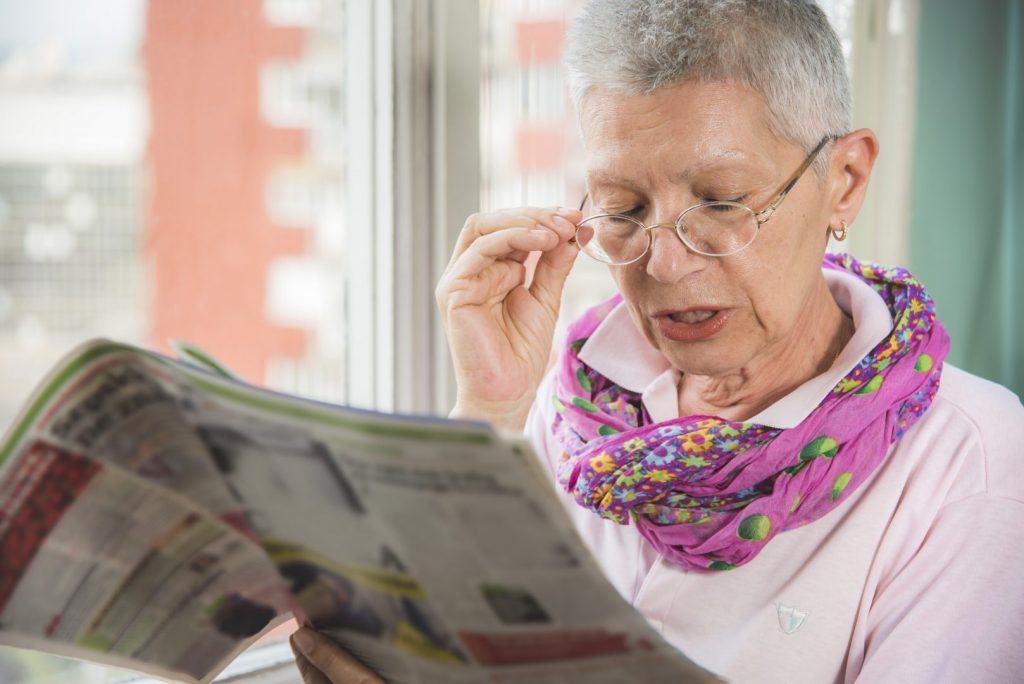
As we get older, our vision undergoes many changes that affect how we interpret and relate to the world around us
One of our basic senses that we may be tempted to take as a given and therefore not give it that much thought – until there is an issue – is our eyesight, also known as vision. Used in this way, vision means our ability to see and perceive visual impressions of what is around us. Used in another but similar meaning, it deals with our ability to see a bigger picture for our lives, our businesses, or our future – a big vision idea, concept, or description of how we would like a real picture to emerge at some future date.
Beginning as infants and continuing to our current age, most of what we experience and learn in the world around us is visual. We constantly are taking snapshots of the world around us – the road or pathway where we are walking or driving, the scenery around us, the inside of our home or office, our loved ones, our clients and customers, our products, advertising messages, TV, tablets and phones, and so much else. We read, watch, observe, notice, and in general take in millions of visual impressions each day. Many we aren’t even consciously aware of doing. There are just so many visual stimuli for us to experience and process. This is why vision is such an important and valuable sense and asset to have.
However, as we age, many of us develop the need for corrective lenses (eyeglasses) to help our eyes focus on the words and images we want to read and see. For some people this happens at a very early age, some a little bit later in grade school, some in young adulthood, and still others much later. Some people go through life with relatively perfect vision and never require corrective lenses to assist them. Some people who wear glasses will actually experience an improvement in their abilities, and the amount of correction that the lenses provide can be adjusted or reduced.
There is nearsightedness and farsightedness as well as astigmatism that are commonly diagnosed and treated by eye specialists – ophthalmologists, optometrists, or oculists. There is a condition called lazy eye and also being cross-eyed that can be treated by medical personnel.
As we age and approach our forties, most of us develop a condition known as presbyopia. We can’t prevent it, treat it, or escape it. It is natural. All we can do is deal with it. This condition sounds serious, but it just means that our eyes can’t focus on the fine print as well as they could when we were younger. Now, we will need reading glasses or “cheaters” as they are called.
Reading glasses typically begin at a magnification power or strength of 1.00 and range from there in 0.25 power increments up to about 3.50 or so. Beyond this power, corrective lenses may be needed. It’s certainly no failing to begin sporting the readers, and many regard this as a badge of maturity. They are so common, that they literally are available for purchase in most any retail place imaginable, including restaurants, gas stations, and shoe stores.
Another phenomenon that happens as we age is that our eyes don’t adjust to light extremes as well as when we were younger – both bright lights and darkness. This is why night vision or driving at night can be an issue for some people. They lose the ability to distinguish or recognize dark shapes in the nighttime because their eyes don’t dilate enough to let light in that would help define these somewhat hidden objects and shapes.
Conversely, bright lights can be tricky because our eyes take longer to respond to closing down to the proper aperture opening – much like choosing the wrong exposure on a manual camera or after our eyes have been dilated by the optometrist or ophthalmologist. This is nothing to be concerned about except that we need to be aware that exposure to sudden bright light may stun us momentarily and take a little longer to respond than it used to when we were younger. In short, our eyes have aged along with us and have developed new characteristics. Most of us can still see well, however.
To assist in seeing better in our home environment, we need to provide ample lighting so that each surface in an area is lit well enough to see clearly what it is and to use it as it is intended – including being able to read instructions or indicator lights and to operate controls. There should be nothing camouflaged or hidden from view because insufficient light is striking it or no light is reaching it at all. This is a common safety failing that we can easily remedy as we work within our own homes and those of our clients.
